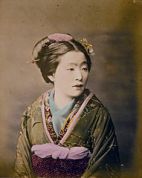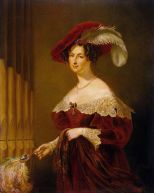This week we’re discussing secondary characters in the stories we create. According to a few sources I checked, secondary characters are more important to the plot than minor characters, but not as important as the major characters. Actually, I find them as important as the hero and heroine of my romances, because my characters don’t work alone. They might be lonely, and they might try to solve their problems by themselves, but eventually they need someone’s help. Someone besides the love interest, anyway. Since the given topic specifically asks about my secondary characters, I guess I’ll start examining them. I’ve got too many stories to analyze the supporting characters in each one, so I’ll categorize them.
Many of my secondary characters are what I’ll call helpers. Most of the time the hero and heroine can’t accomplish his or her goal by themselves. So there are assistants, or perhaps someone whose expertise is needed. In The Samurai’s Garden, the main character (Hiro) has a friend and former comrade-in-arms (Ginjiro) who assists in fighting the rogue ronin and training the townspeople to fight. In the process, Ginjiro experiences his own character growth. He was a lower ranking samurai, so he looks up to Hiro. I enjoyed writing about Ginjiro. He’s a loyal and dependable friend, and I found myself wanting him to have a happily-ever-after of his own.
Another important supporting character is the mentor. This is someone who’s perhaps older and wiser and provides advice, as well as the voice of reason. In The Samurai’s Garden, Hanako’s neighbor Reiko is an example. Often, the main character knows what needs to be done, but needs someone to voice it and confirm it. Or he/she is there to help bring the main character to that conclusion. Reiko provides a sympathetic ear, physical help when it is needed, and encouragement. Later on, when Reiko experiences a painful loss, Hanako is the first one to arrive and provide emotional support.
Sometimes, the supporting character is a devil’s advocate. Not really a villain, but simply an annoyance. In this case, as the protagonists deal with this character we learn a bit about that person’s strengths. In Love’s Refrain, the dowager countess (the hero’s mother) plays this part because she has selected a wife for her son, the earl, but he’s not convinced she’s made the best choice for him. Still, because of his respect for his mother, he makes the effort to court the woman his mother chose. As all women know, the way a man treats his mother is a strong indicator of how he will treat his wife!
My main characters often have children, and sometimes they play an important part in the stories. Certainly the way a person takes care of his or her children sheds light on that person’s inner character or goodness. For a male, seeing him as a loving father amps up the hero factor. But a child can also provide the voice that clarifies a person’s purpose or define what he or she needs to do. In Christmas Wishes, Mitch is distraught at the the idea of Sophie moving across the country when he has just settled into what he feels is the perfect home for him and his daughter. But that daughter assures him, “If she goes away, we need to go with her.” And that’s when he realizes that he needs to do what it takes to keep Sophie in his life.
Depending on the length of the story, the secondary characters will be involved in a subplot. When that happens, they’ll have scenes in their points of view. I think this gives the reader another view of the main characters and what they are doing. It also provides a little break from the main action. Sometimes they have their own romances and/or conflicts. After all, these characters have lives of their own!
Can you think of other roles secondary characters play?





wow. terrific analysis. Your model is quite similar to mine, though I had not focused on mine enough to study it as well as you’ve done here. .
In my case, this was an instinctive development. And since you’ve done it successfully, I guess my instincts were correct.
We differ in a few details, of course — which you’ll see on Hound Day.
LikeLike
The differences between authors are what make our stories stand out! Thanks so much for the compliment, Jeff. I’m looking forward to reading about your secondary characters.
LikeLiked by 1 person
we had another topic (a few months ago) in which your post perfectly framed my own thinking and gave me a head start on how to compose my own thoughts.
No longer recall which topic, however.
LikeLike
The way you see your characters just made me add all of your work to my TBR list. Great analysis. I will really have to stop and give some real thought for Friday.
LikeLike
Thanks so much, Tonette! Your approval means a lot. I’m looking forward to reading how everyone else sees their secondary characters.
LikeLike
I really enjoyed your post. This week is proving to be a difficult topic for me.
LikeLike
Reblogged this on Heaven now and 4ever and commented:
I like this thought on secondary characters…..every book has them, but life has them too…..
Very good explanation indeed – thank you #fourfoxesonehound
LikeLiked by 1 person
Thank you so much for stopping in an reblogging! I’m so flattered.
LikeLike
Hope you return on Thursday, Youschka, for more on this topic
LikeLiked by 1 person
I love your analysis of your secondary characters and agree, they are sometimes needed simply to distract from the main characters for a few moments. I also use my secondary characters to reveal more information about my heros and heroines. Sometimes the information is not complimentary, sometimes it adds insight to their background and why they act the way they do now. I find it a good way to avoid ‘info-dump’.
LikeLiked by 1 person
I agree, Sherry. Having a secondary character respond or talk about a hero/heroine is a better way to show those characteristics rather than to tell about them. Thanks for your input!
LikeLiked by 1 person
yes, that’s one of the jobs I have for my supporting characters. Check back in tomorrow
LikeLike
Pingback: It Takes a Village | fourfoxesonehound